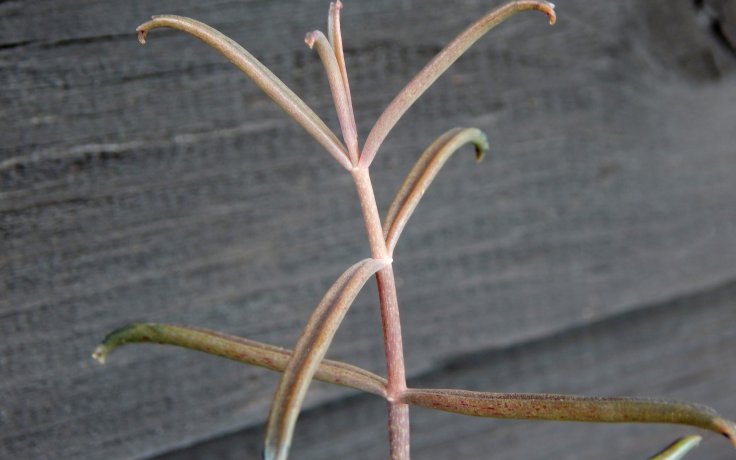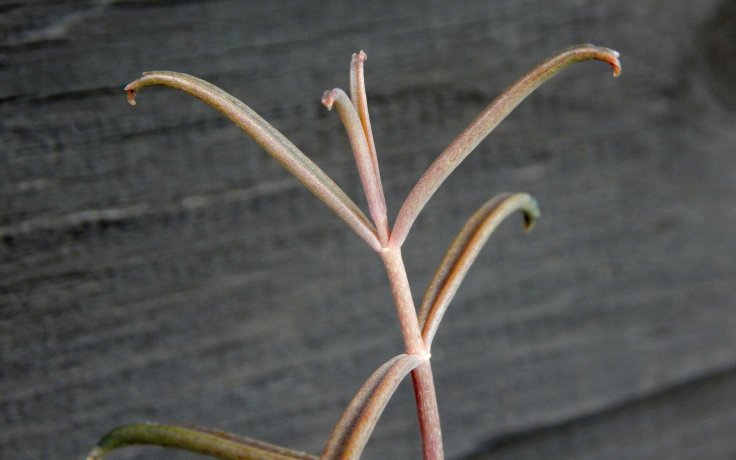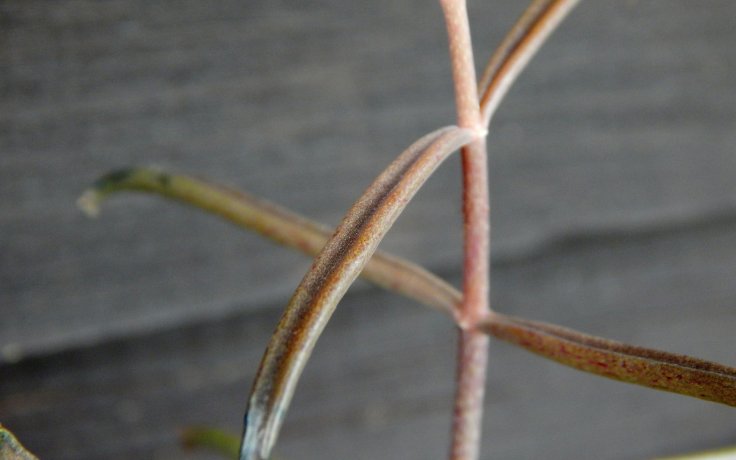- Home
- Succulents
- Kalanchoe
- Kalanchoe beauverdii





Kalanchoe beauverdii
Place the succulent in a sunny location.
Always water a few days after the substrate has dried out. In winter, limit watering.
It can tolerate -3.9 °C in the short term. However, the plant is not hardy.
The succulent turns, for a plant, a very unusual colour. It has an almost black colour. When you look closely, you can also see small purple stripes.
Kalanchoe beauverdii, also known as Beauverd's Widow's-thrill, is a majestic succulent plant native to the dry scrub forests of southern and southwestern Madagascar. Formerly called Bryophyllum beauverdii, it grows at altitudes of 850 m above sea level. The epithet "beauverdii" honours the Swiss botanist Gustave Beauverd (1867-1942).
It grows with dark green to black leaves with purple stripes. The leaves are usually covered with a waxy coating. They vary in shape and size and grow in broadly opposite pairs that always rotate 90 degrees from the last pair. The leaves can grow up to 11 cm long and 4 cm wide. On the edge of the leaves are several easily detachable 'babies' - viviparies - which are used for vegetative reproduction. Kalanchoe is a succulent climber with slender stems that branch profusely. They are woody from below and grow either along the ground or stump upwards with support. Over time they can reach lengths of up to 5 metres.
During winter it is adorned with light green to grey-green flowers with reddish-purple stripes. The bell-shaped flowers hang down in terminal racemes and brighten its appearance.
The succulent is not fertilised. To maintain a good shape and encourage growth, I recommend that the plant be lightly pinched occasionally. Kalanchoe beauverdii is suitable for growing as a climber as well as an overhanging plant. It is a relatively rare plant in our collections. With its attractive 'black' colour and low maintenance, it will be a highlight of any succulent collection.